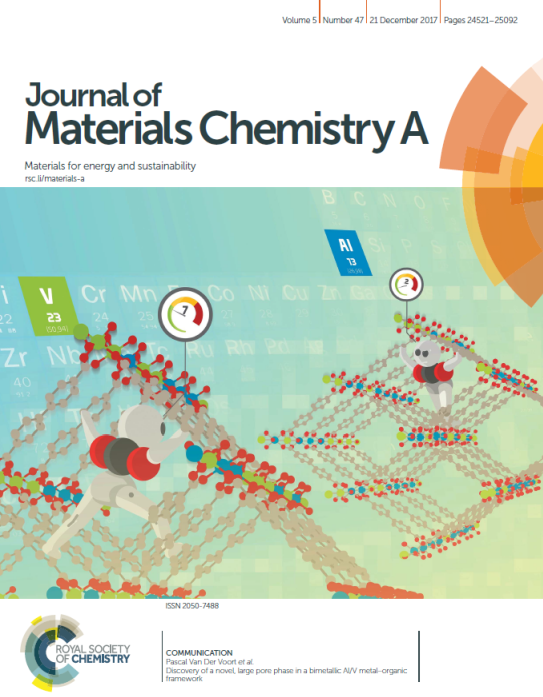A communication by the COMOC group on the discovery of a novel, large pore phase in bimetallic AL/V metal-organic frameworks (MOFs) was published on the cover of the Journal of Materials Chemistry A.
Metal-organic frameworks (MOFs) are highly crystalline porous architectures built up of inorganic metal nodes connected via organic building units. The enormous variability in both the organic and the inorganic moiety makes these hybrid structures highly tunable towards a large number of applications. For example, mixed-metal MOFs can be used as gas adsorbing and separating materials. The team of prof. Van Der Voort discovered how to tune MOFs to open and close their pores at a certain CO2 pressure. This opens the door to develop new processes for the separation of CO2 from other gasses (such as methane) or to temporarily enrich and capture large amounts of CO2. This work is highly relevant for the carbon capture and utilization (CCU) strategy aiming at the reduction of CO2 emissions.
Reference to the full paper: J. Mater. Chem. A, 2017, 5, 24580
Discovery of a novel, large pore phase in a bimetallic Al/V metal-organic framework
Hannes Depauw, Irena Nevjestic, Guangbo Wang, Karen Leus, Freddy Callens, Els De Canck, Klaartje De Buysser, Henk Vrielinck and Pascal Van Der Voort

